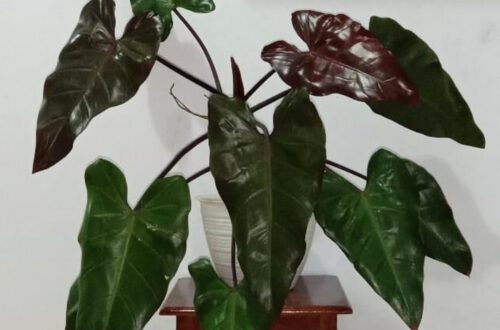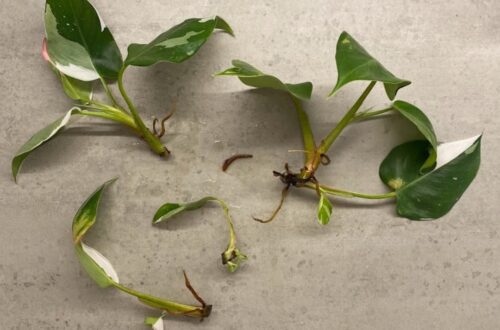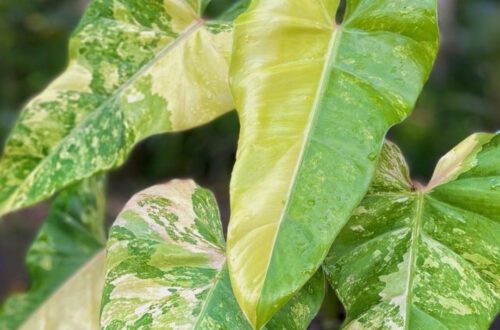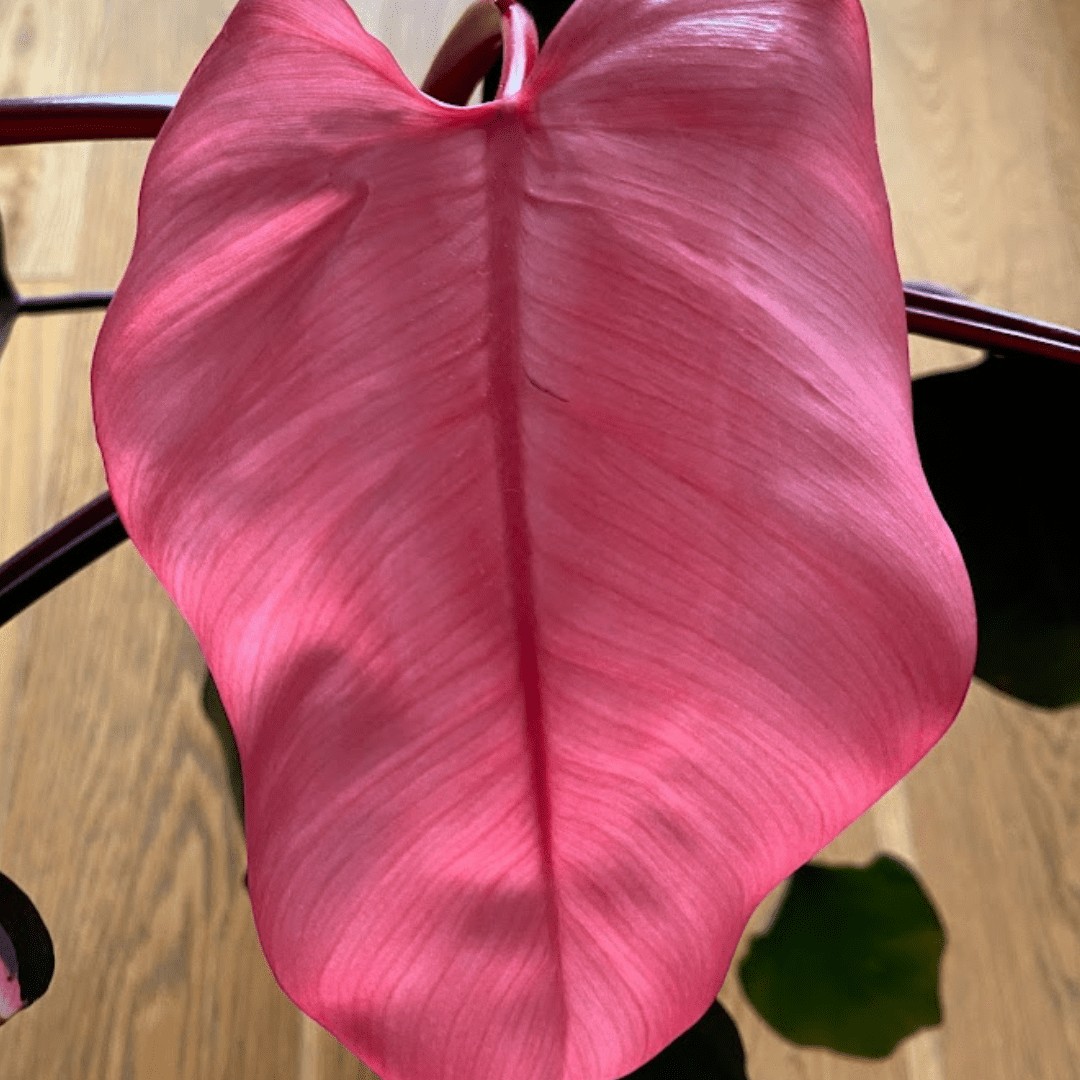
Philodendron Pink Princess Care
The key to philodendron pink princess care is to give it plenty of indirect light to encourage the variegation and to not over water it…
Philodendron Pink Princess Care Summary
| Light needs: | Bright indirect sunlight. |
| Watering needs: | Check weekly, water if top half of the soil is dry. |
| Fertilizer: | A balanced fertilizer once a month in spring and summer. |
| Soil: | A well draining potting mix with 20% perlite. |
| Humidity: | 50%. |
| Temperature: | 18°C to 27°C (64-81°F). |
| Where to buy: | Try our list of Rare Plant Shops or Etsy. |
| Common issues: | Overwatering, mealybugs. |
Introduction
One of the most popular rare houseplants in recent years – the philodendron pink princess is known for it’s bright pink variegated splashes. It is a cultivar of the popular philodendron erubescens. I have a few of these plants, they look amazing. It is relatively easy to care for, we run down all you need to know about this beauty…
Tip: we recommend Etsy for buying plants. Look for the best rated seller you can, and try to buy as close to your home as possible so the plant does not travel too far.
A note about affiliate links: when you buy a plant, pots, soil, or other goods through links on this article we sometimes earn a commission. It doesn’t cost you anything, but it really helps us out if you do use them. Thanks a lot! An example of this is if you buy a plant on Etsy using this link. Read our privacy policy for more information. Thanks again.
See also: Philodendron Pink Princess Propagation, Reverted Philodendron Pink Princess, Philodendron Burle Marx Care.
Light Needs
A philodendron pink princess will do best in bright indirect sunlight, as it will encourage growth and variegation. Do not let the plant get direct sun as it can burn the leaves, especially the variegated parts.
Pink Princess Philodendron All Pink Leaves
I have a few pink princesses, and there is such a thing as too much variegation, for example if you get an all pink leaf. In this case I would enjoy the leaf for a day or two and then cut it back. It will die anyway as it cannot produce enough energy on it’s own. I cut mine back past the node and then move it somewhere with less light to try to encourage less variegation. The perfect leaf for me is the half-moon to be honest, you do not want them producing all pink as they will die quickly.
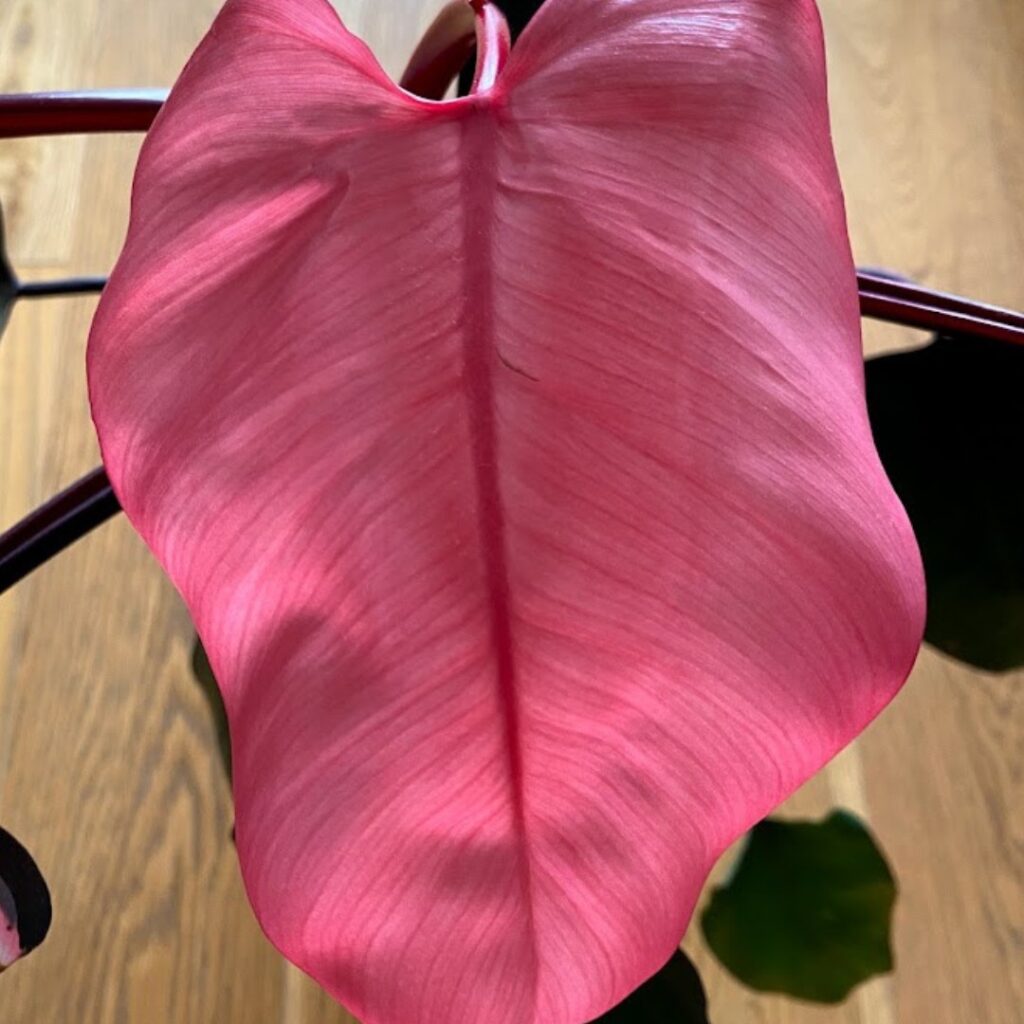
Half Moon Philodendron Pink Princess
Some plants are sold as half moon pink princesses. They are really sought after as they have an ideal amount of variegation. Be careful though as the leaves after the half moons could be different – they might be more variegated or have none, it can change per leaf, so don’t buy a half mon plant and expect every leaf to be half moon.
How To Propagate Philodendron Pink Princess
These beautiful plants are easy to propagate, the key is to get a stem cutting with one node and one leaf, and let the cutting callous over for an hour or two to reduce the risk of rot. Then plant the cutting up in a cup of moist sphagnum moss, and then put it in a bright window sill but to the side, away from direct sunlight. It should root within 4 to 8 weeks and start to put out new leaf growth in 2 months. You can then pot it up into soil and treat as a normal plant. Use a well draining Philodendron Soil.
You can use water, soil or leca too. I have used leca many times, but I have found that sphagnum is the best in terms of successful props.
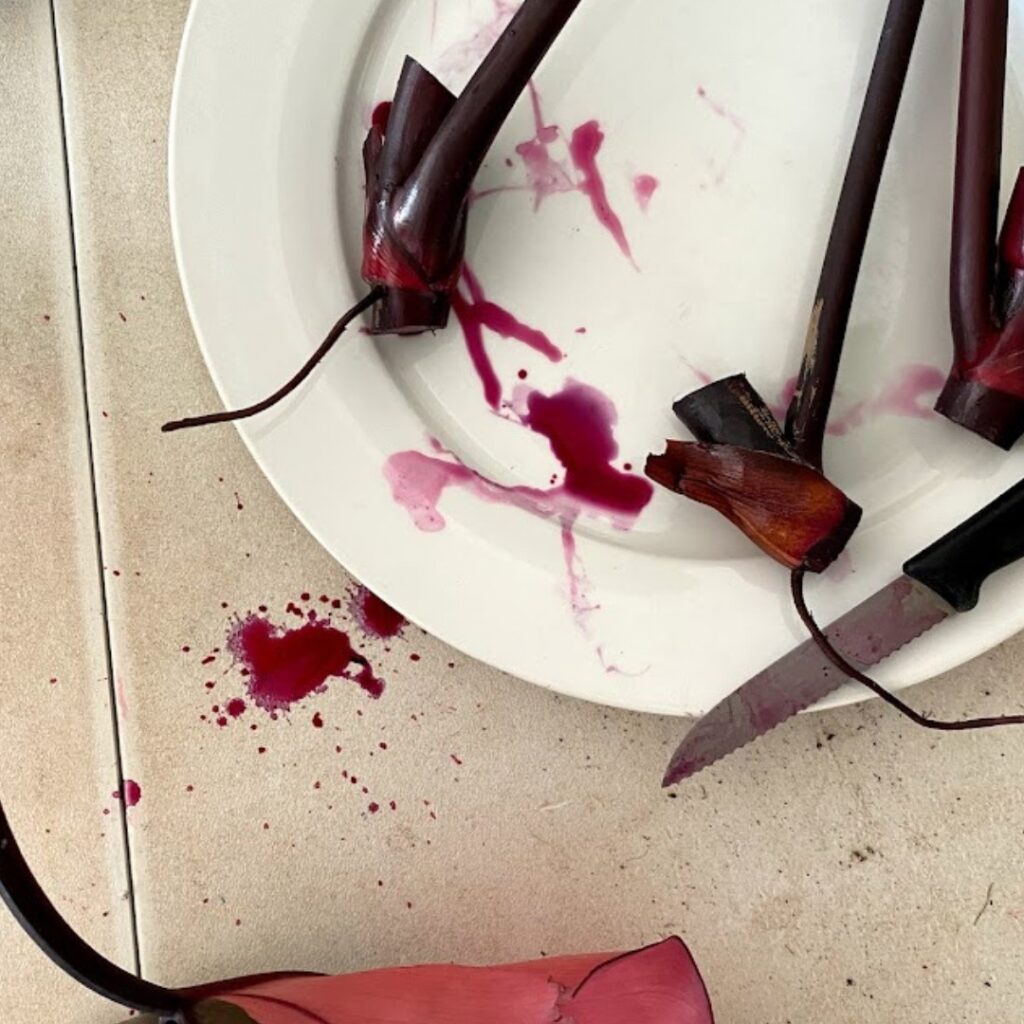
How Often to Water
Check your plant every week and test the soil with your finger. Only water it if the top half of the soil is dry. Do not flush a pink princess with lots of water, but instead give it just enough water until water drips out the bottom, then stop.
Let the plant drain for about ten minutes before putting it back in its outer container, as it is really important that a ppp’s roots do not sit in water or wet soil as this can lead to root rot.
Fertilizer
Give it a balanced feed monthly in the spring and summer.
Soil
Use a very well draining compost to avoid root rot. This plant must not sit in wet soil. 20% perlite to 80% potting compost is a good mix. For more on Philodendron soil see our guide on what to buy or how to make your own: Philodendron Soil.
When To Repot
Repot your pink princess in spring to give it more space and to refresh the nutrients in the soil. A good time to do this is at Easter time, so it has the whole growing season to grow into it’s new pot.
Humidity
50% humidity is ideal for a ppp, so give it a pebble tray with water under it or a humidifier.
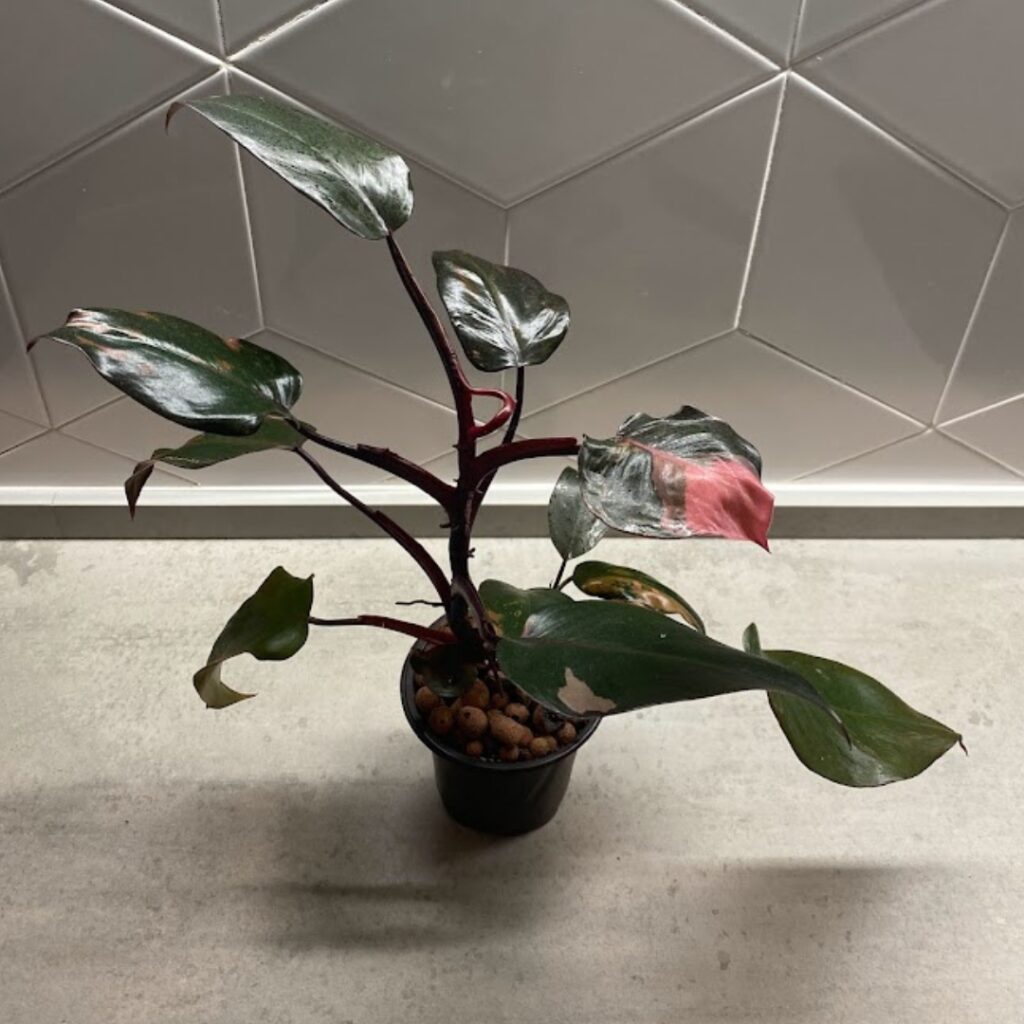
Temperature
These plants do well in most households as the ideal temperature range is 18°C to 27°C (64-81°F). Just don’t let them get too cold in the winter.
philodendron pink princess vs pink princess marble
The pink princess marble refers to a cultivar that has a really in demand marble variegated pattern. Be careful, there is no guarantee that this patterning will remain on the new growth. You can care for the pink princess marble the same way as you do a normal pink princess.
philodendron pink princess vs strawberry shake
These are easy to tell the difference, as the strawberry shake has a reddish/orange hue to it, the pink princess has a defined pink color in the variegation. You can get pink on the strawberry shake, but you get orange too, the pink princess has bold, pink only variegation.
philodendron pink princess USDA Zone
Zones 9b-11.
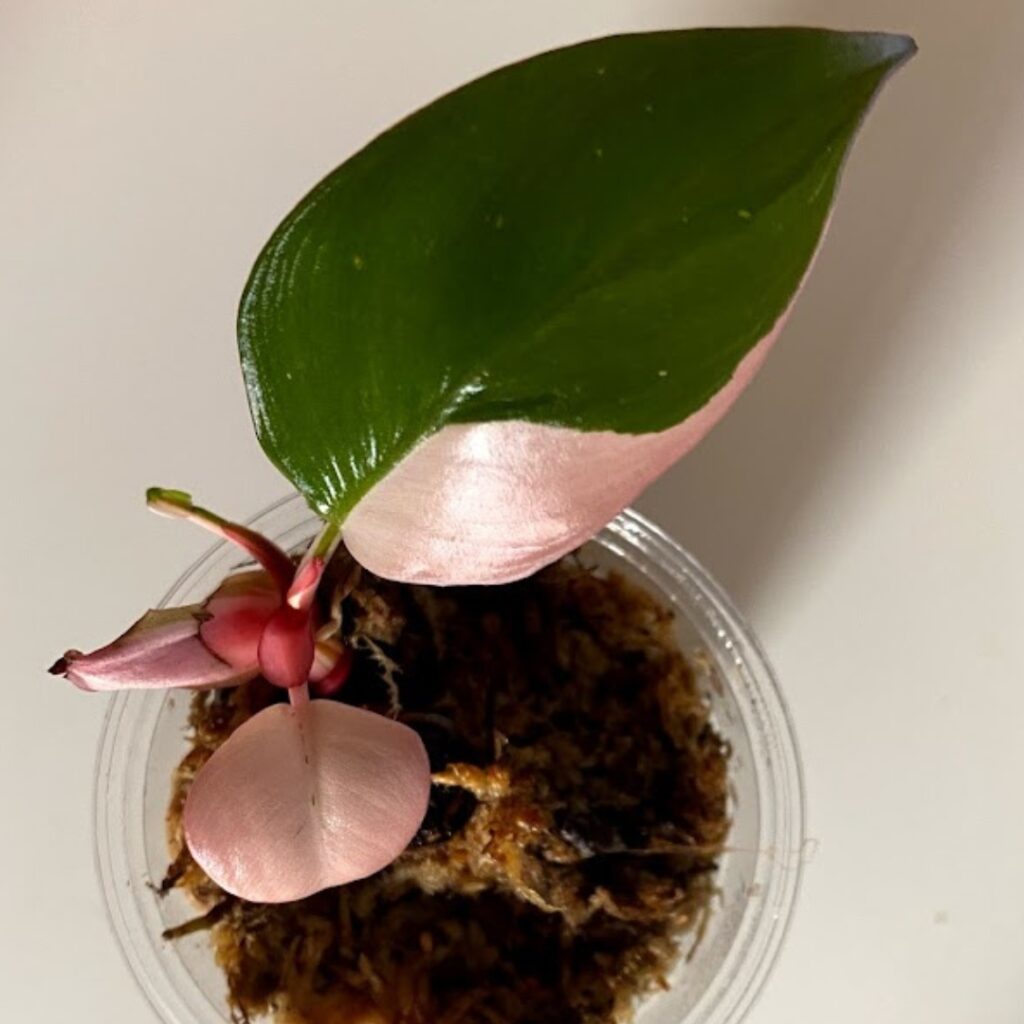
Where To Buy
Try one of these Rare Plant Shops. Or Etsy.
Other Names
Philodendron erubescens pink princess.
Philodendron Pink Princess Care FAQs and Common Problems
Overwatering is the biggest cause of issues in these plants. Do not let them sit in soggy wet soil, make sure you tip all extra water out after watering, and only water them if they need it. Root rot and leaf-browning are very common issues from overwatering. Also keep an eye out for common plant pests like mealybugs.
Pink princesses can revert. If they put out leaves with no pink variegation, you can cut them off, back to the last node that produced a variegated leaf. Then move it to a brighter location (but not direct sun). The light and cutting back to a variegated node should both encourage more variegation. For more on this see our guide: Reverted Philodendron Pink Princess.
The pink congo and pink princess are different as the pink congo has all pink leaves at the top. The pink congo’s pink is not naturally induced, it uses chemicals and will fade over time., they are not natural and will grow out green. I personally would geta pink princess every time, they are thing of (natural) beauty.
They do not like to be root bound, consider potting them up to a bigger pot when the roots start to get crowded.
The philodendron erubescens grow naturally in South and Central America. The pink variegation you see in the pink princess occurs from genetic mutations and is then bred for a more stable pink variegation, so you are unlikely to see any pink princesses in the wild.
They can grow relatively quickly for a houseplant as long a you give them plenty of light (but no direct sun).
The need to be propagated from another plant with good variegation and so cannot be grown from seed.
They are expensive as supply cannot meet demand. However in recent years the price has dropped as many plant breeders and collectors are propagating it for sale and so more have hit the market. Also the plant is being produced in bulk with tissue culture and as more and more of these hit the market there should be more price drops.
The variegation is not stable. You can get all pink and all green leaves and plants can revert easily. For more on this see our guide: Reverted Philodendron Pink Princess.
If they revert you can can them back to the last variegated part of the plant, then hope they regrow back variegated. For more on this see our guide: Reverted Philodendron Pink Princess.
The best way is to keep it in bright but indirect sunlight, like off to the side of a south facing window so it does not get the sun but gets a lot of light.
You can grow cuttings in water indefinitely. the do best if started in water as a cutting.
They turn orange when sun burned, or lack of water (or both). Give it plenty of indirect sunlight, but no direct. And make sure it is not underwatered.
Additional Resources
Links:
- More info on the RHS plant page.
Other Articles You Might Like
You might also like our other articles: Philodendron White Princess, Philodendron White Knight, Philodendron Dark Lord.
Please follow us on Instagram and Pinterest for regular plant updates and occasional plant giveaways.


